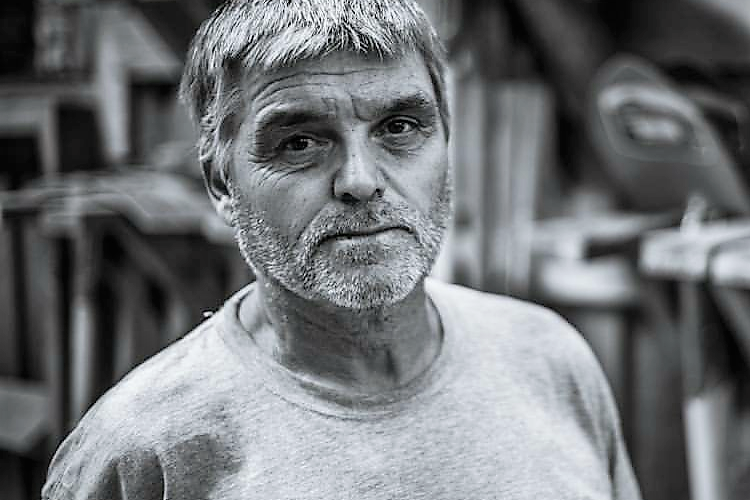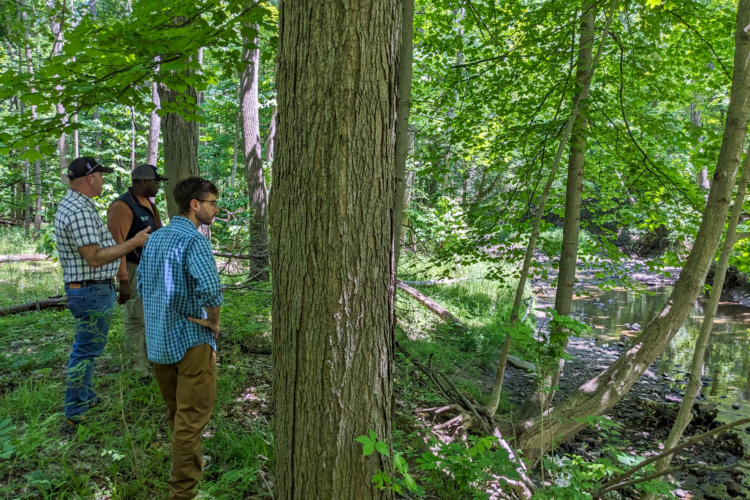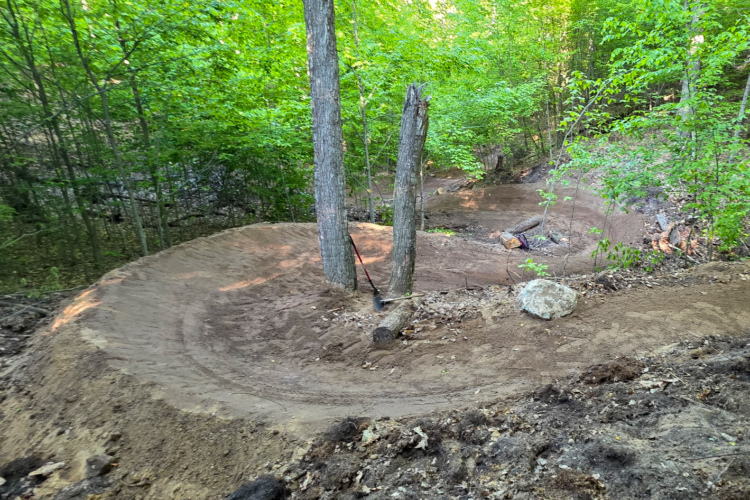
Back in January, the Singletracks Podcast hosted Tom Prochazka of Gravity Logic. The episode focused on the mountain bike mecca that is Whistler Bike Park, building trails, and the origins of Gravity Logic.
However, it was a casual conversation that Jeff had with Prochazka before they got rolling on the podcast that sparked the idea for this article. As they chatted, they got onto the topic of trail names, which, as we all know, can range from funny to ironic to inappropriate.
We wanted to learn more about the stories behind some of the most iconic trails in mountain biking and how they got their names. And no other place is more iconic than Whistler Bike Park. With Prochazka responsible for constructing many of Whistler’s trails, we were fortunate enough to get back in touch with him to hear the tales of their beginnings.
Prochazka was the Whistler Bike Park manager from 2001 to 2007. He co-founded Gravity Logic in 2005 before going full-time with it in ‘07. Since 2005, Gravity Logic has built over 40 bike parks—from Trestle and Steamboat in Colorado to Järvsö in Sweden.
Needless to say, Prochazka has some stories to tell.
A-Line and B-Line
The terms “a-line” and “b-line” are pretty standard for mountain biking. They refer to the different line options a rider has going down a particular trail. Usually, the “a-line” will be the main flow of trail traffic. On particularly challenging obstacles or bits of trail, an optional “b-line” will be created—sometimes officially, sometimes unofficially—to go around the challenging obstacle.
This line of reasoning fits well with the A-Line and B-Line trails at Whistler. A-Line is an iconic black-diamond trail, with jump after jump stretching two miles down the mountain, some of which are up to 40 feet long. B-Line brings the gnar factor down a bit, with smaller jumps and berms that create a meandering blue trail, which is excellent for warming up.
However, B-Line was actually built before A-Line. Not only was it built before A-Line, but B-Line also has another important distinction. “B-Line was the first excavated trail,” Prochazka told us. But, as the crew used machines to build B-Line, they ran into a significant problem: a rather large stump.
“Stump” may inaccurately represent what the crew was dealing with. Prochazka said it was more like half the tree was still standing. “There was a huge old-growth rotted stump that nobody wanted to go near with a chainsaw because the thing would probably crumble, and they would probably be killed,” Prochazka explained.
Progress on B-Line was halted until Marty, one of their crewmates whom they referred to as “Marty Rubble,” blasted the stump out. The stump was wrapped in blast cord, which Prochazka explained is basically an explosive itself. Prochazka also said there may have been a few sticks of dynamite in the mix as well.
“The thing blew up, and there were cantaloupe-size boulders raining down all over the mid-station of the Gondola,” Prochazka recalled. “And, in Canada, that det cord is called ‘b-line.’”
So, B-Line came first and was named after the explosive that removed a tree halting the trail crew’s progress. A-Line was built later and appropriately named “A-Line” because, well, they already had a B-Line, and the plan for A-Line was to make an advanced jump trail.
Angry Pirate
Themes also find their way into trail names. For Prochazka and Gravity Logic, trail names are often left up to the marketing department of the mountain contracting them. During his time at Whistler, Prochazka said the trail crew named most of the trails. “They did the work; they should name it,” he told us.
Themes can be a catchy thing for a marketing department when naming trails. While Prochazka doesn’t know if this is the case at Trestle, but it is interesting that some trails have a legal or courtroom theme—Witness, Jury Duty, Cruel and Unusual.

A kung-fu theme can be found at Whistler, with trails like Ninja Cougar, Karate Monkey, and Samurai Pizza Cat, to name a few. Prochazka didn’t know exactly where those names came from, possibly attributing the theme to a cartoon the trail crew had been watching.
One trail name that for sure came out of the trail crew, however, is Angry Pirate. Angry Pirate has an upper and lower, with the upper being a black diamond, flowy but technical trail with tight switchbacks. The lower section is blue and flowy, running alongside Crabapple Hits. Altogether, Angry Pirate drops roughly 450 feet over half a mile as it runs down Whistler.
And the name came from a bee sting.
“When we were building that, one of the guys got stung by a wasp right under the eye, which swelled shut his eye,” Prochazka told us. “And he was quite angry about it. So then guys [told him], ‘You look like an angry pirate.’”
Fatcrobat
Not all trails are named because of on-trail events during construction. Sometimes, trail names come from events that have nothing to do with the trail.
During the construction of the trail that would be so lovingly named “Fatcrobat,” Prochazka got a call from his crew leader overseeing the construction. It was the middle of summer, and the day’s heat was taking a toll on the trail crew.
“He told me, ‘Pro, get some beer; it’s too hot to work, we’re going down to the lake,” Prochazka, aka “Pro,” said. The crew finished the day enjoying cold beers and watching each other go off the rope swing at the lake.
The crew leader, who initially called off the work day and moved his crew to the lake, had a particularly elegant backflip off the rope swing into the water. Being a bit more of a rounded guy, another member of the trail crew, impressed, called out, “Wow, look at that fat-crobat!”
Thus, thanks to a few beers, a rope swing, and a decent beer gut, the trail found its name.
Changing names
We all have that one trail that has an official name, but everyone calls it by a different, usually original and less politically correct name. Or, you’ve gone to ride an out-of-town trail you’ve heard a lot about but can’t find it. You search and search, only to discover that the trail you were directed to is named something else on the map you’re using.
Whistler has some of the same, although Prochazka says they don’t suggest names they know will be rejected. And while he doesn’t know where the original name came from, Prochazka shared that the trail now known as Polp Fiction once had a different name. “People that have been around for a long time don’t call it Polp Fiction,” he shared. “They say, ‘Let’s go down Crack Addict.’”
Obviously, with drug issues being a significant problem in both the U.S. and Canada, “Crack Addict” probably isn’t going to fly with most marketing departments. Thus, another name was thought up for the trail.
Before their Whistler days, Gravity Logic co-founders Dave Kelly and Rob Cocquyt called themselves P.O.L.Ps as they built trails in Squamish. P.O.L.P stands for People Of Lesser Purpose, and naming the trail was obviously a nod to Quentin Tarantino’s Pulp Fiction.
Prochazka briefly mentioned another trail that had to have its name changed. While he wouldn’t mention the original name of the trail since it wouldn’t be appropriate for any publication, he did say the trail is now called D1.
We’ll leave it to you to imagine what it was once called.
Over 20 years of building trails
As you might imagine, Prochazka and his Gravity Logic crew have built quite a few trails over the years. And while they can’t remember the stories behind each name, or perhaps the names are unmemorable, Prochazka has always had strong feelings about two things—first, the trail crew should name the trails and second, personal accolades shouldn’t be a part of naming the trail.
The Manager is an excellent example of this. The Manager is a pro-line option with a series of rock rolls connecting to Upper Duffman. Prochazka took off his park manager hat to build The Manager, prompting some of his crew to want to name the section things like “The Tom Pro Drop.”
“We were a team; it was always teamwork. There’s not one person that can say, ‘Oh, I built that,’” Prochazka told us. Thus, the section was called “The Manager” since Prochazka was the trail manager on the project.
Yet, when it comes to building trails, Prochazka humbly points the attention at guys like Dave Kelly and the crew that worked under him. Regarding designing and building trails, Prochazka points his finger at Kelly as the one we have to thank for many of Whistler’s iconic trails.
Regardless of how often Prochazka got his hands dirty, we’re thankful for the stories.
Curious about a Whistler Bike Park trail name, or another famous trail? Comment below and we’ll see if we can find an answer!










0 Comments